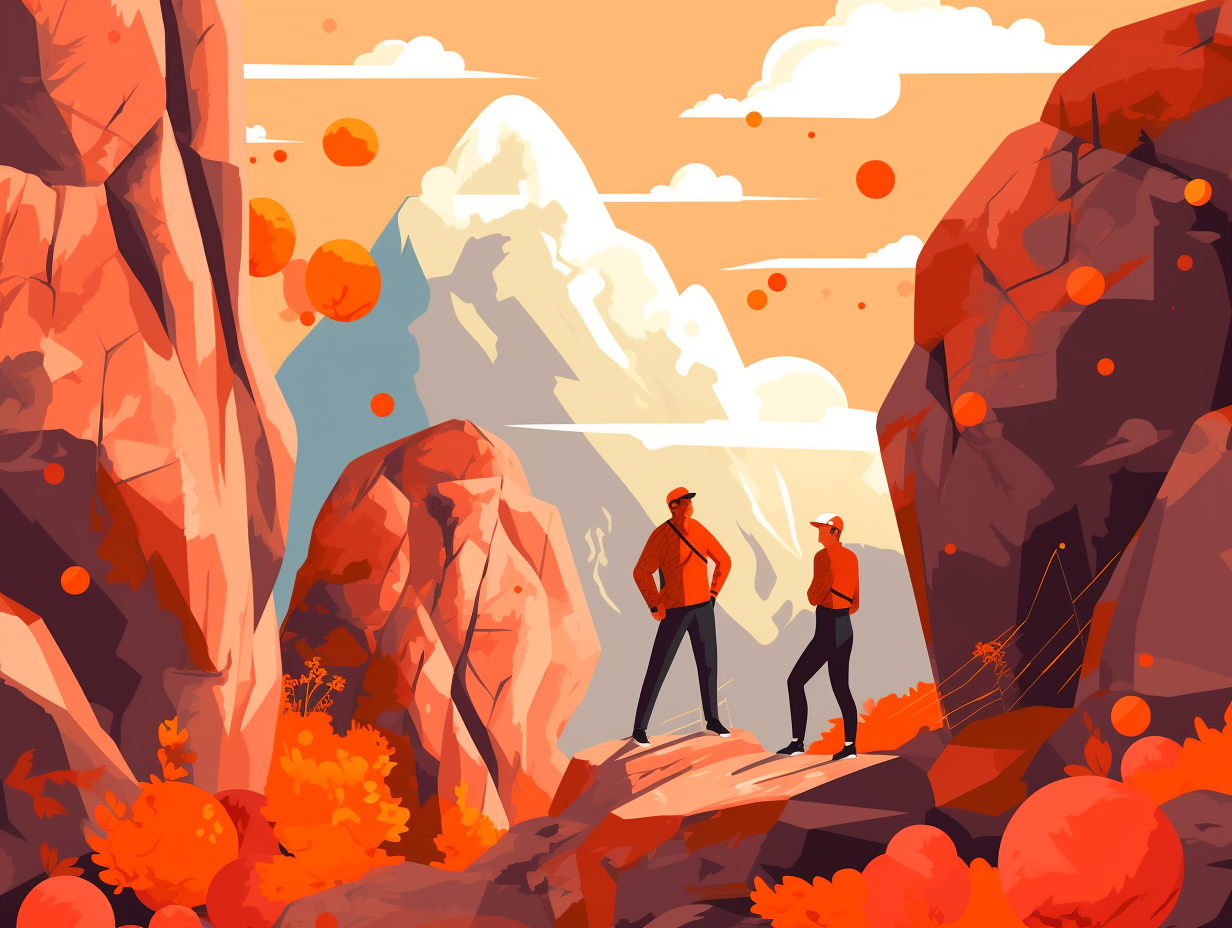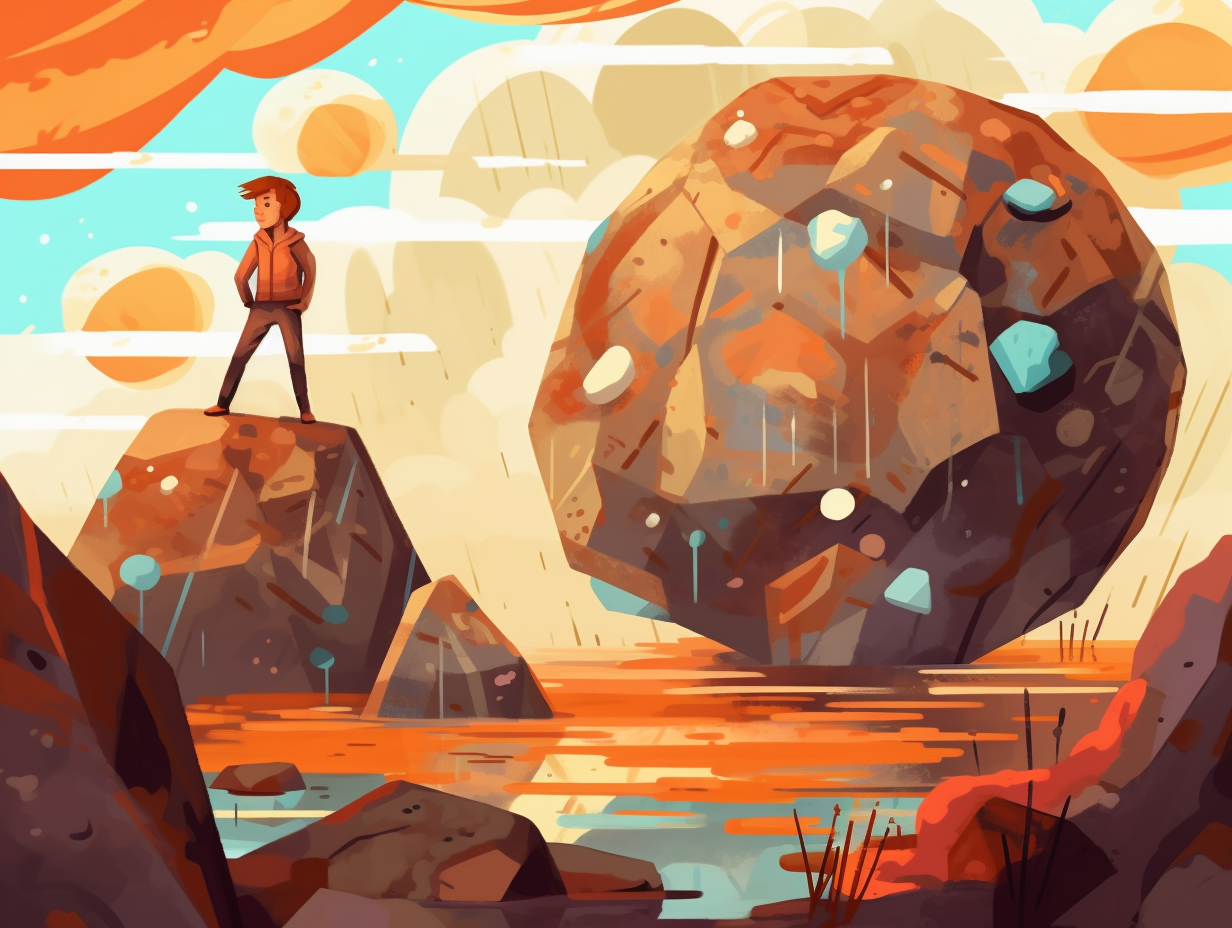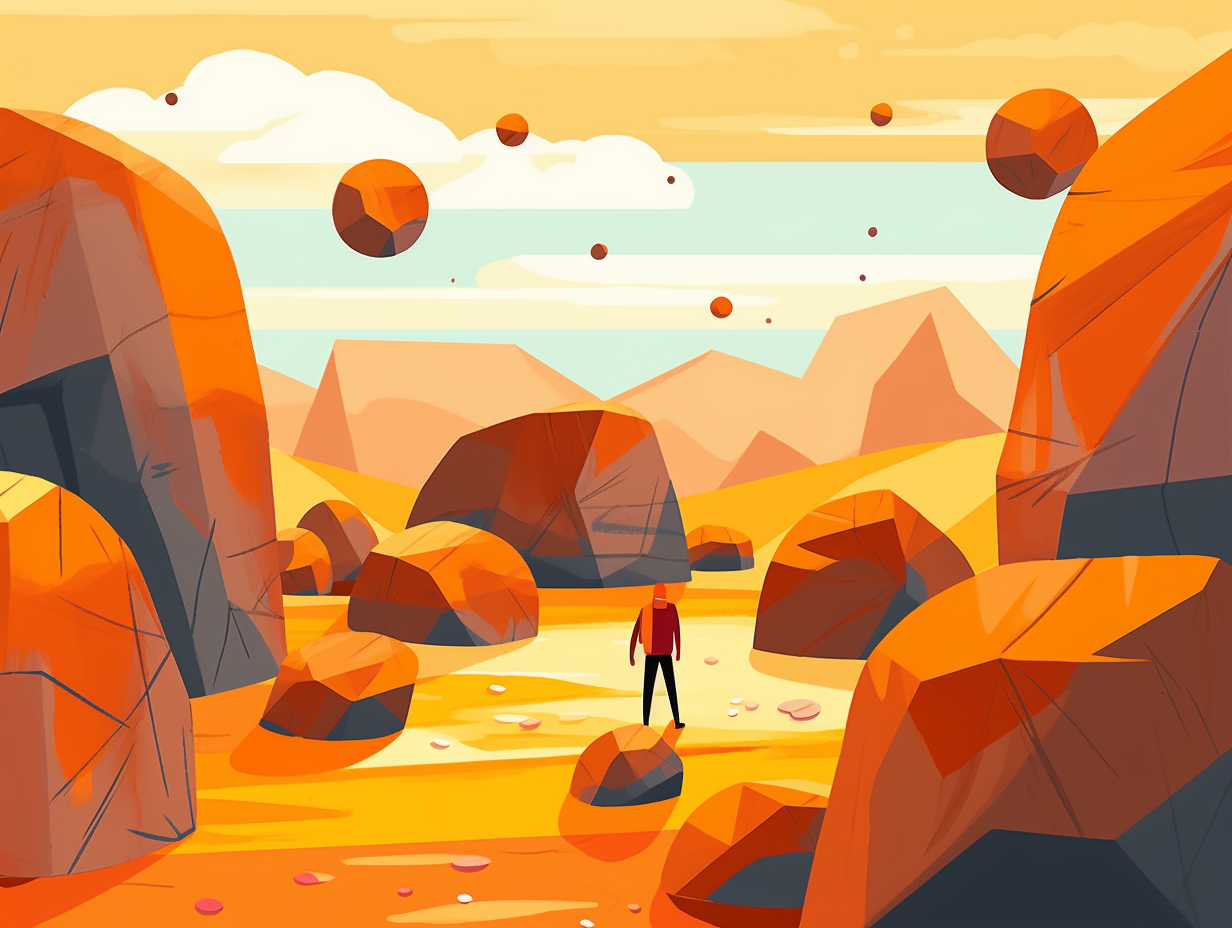Discover the 14 Most Fascinating Fun Facts About Igneous Rocks: A Must-Read for Rock Enthusiasts!

1. Obsidian: Nature's Fashion Statement
If you thought glass slippers were the pinnacle of slick fashion, allow us to introduce you to nature's dark and edgy counterpart: Obsidian, an extrusive igneous rock, sports a surface so silky and glossy that it's been used for millennia to craft jewelry, knives, and all manner of desirable trinkets, proving that Mother Nature can rock the catwalk too!
Source => usgs.gov
2. Obsidian's Glassy Secret
Breaking news from the Rock Tabloid: Obsidian has a shocking glassy secret it can't crystallize! Factual exposé: Rapid cooling during the formation of extrusive igneous rocks like obsidian results in a glassy texture due to the absence of crystalline structures.
Source => nationalgeographic.org

Did you know metamorphic rocks like marble and gneiss transform under extreme heat and pressure, creating incredible geological formations without melting? Discover the marbelous world of these rock stars!
=> Fun Facts about Metamorphic-Rocks
3. Igneous Rocks: The Geological Detectives
Step aside, Sherlock Holmes! Igneous rocks are the true detectives of Earth's crust, using their mineral fingerprinting and magma-derived timekeeping skills to blow the lid off crusty, deep-earth mysteries: These elementary rock stars not only spill the tea on the composition and conditions of the lower crust and upper mantle, but they also serve as crucial pieces in the geological time scale puzzle, pinpointing ages by radiometric dating. Bonus plot twist: they're fabulous hosts of valuable mineral deposits like tungsten, tin, uranium, chromium, and platinum, making them Earth's unsung geological sleuths.
Source => en.wikipedia.org
4. The Moon's Lava Landscape
Moonwalkers, beware: If you stumble upon the Moon's maria and the highlands, you might find yourself caught between a rock and a lava flow! Funny, isn't it?: The dark areas on the Moon's surface, known as maria, are actually composed of basaltic lava flows from volcanic processes that happened billions of years ago, while the highlands are made of anorthositic igneous rock.
Source => en.wikipedia.org

5. Crystal Size Stories
Igneous rocks, the reality TV stars of the geology world, come in all shapes and sizes – some flaunt their gigantic bling while others remain mysteriously minuscule: The size of the crystals in igneous rocks hints at their origin story, with massive crystals up to 3ft large forming deep within the Earth's underground VIP lounge and tiny ones developing near the surface, cooling rapidly as if trying to make a swift getaway.
Source => sites.northwestern.edu
6. Mother Nature's Geometric Groove
Ever wonder if Mother Nature dabbled in geometry? She seems to have a knack for hexagons, especially when it comes to her trendy lava home décor: Igneous rocks like those at Devil's Tower in Wyoming and Giant's Causeway in Northern Ireland boast mesmerizing hexagonal designs, thanks to the unique cooling process of lava. As the surface cools faster than the underlying lava, stress-induced cracks form and adjust towards 120° angles, locking in that all-natural, geometric groove.
Source => geologyin.com
7. Pumice: The Water-Absorbing Rock
Did you hear about the pumice stone that walked into a bar and asked for a drink? It certainly wasn't a lightweight, but it had quite an impressive party trick: When submerged in water, the igneous rock pumice not only absorbs the liquid to become heavier but also becomes a gardener's best friend, able to retain moisture and nutrients in soil for healthy, flourishing plants.
Source => byjus.com
8. Igneous Rocks' Fashionably Late RSVP
If igneous rocks could RSVP to a geology party, they'd be fashionably late — often taking centuries to make an entrance as they cool deep beneath the earth: These rockstars reveal valuable information about the earth's history through their unique mineral compositions and textures, helping scientists piece together a timeline of our planet's crusty dance moves.
Source => volcanoes.usgs.gov
9. Igneous Rocks: Gemstone Matchmakers
If gems are a girl's best friend, then igneous rocks are the matchmaker extraordinaire: they can contain an impressive array of gemstones such as quartz, garnet, tourmaline, and diamond, often forming in pegmatites and hydrothermal veins that develop with magma crystallization under extraordinary conditions.
Source => geologyin.com

10. Igneous Rocks' Color Palette
Feeling gray or tickled pink? Igneous rocks have a whole palette to keep you entertained: their colors range from black, gray, pink, white, to even green, all thanks to the unique combinations of minerals found in each type.
Source => nps.gov
11. Pele's Hair: Lava Fashion
Did you hear about Pele's Hair Salon? They specialize in the hottest hairstyles sculpted by lava herself: Thin strands of volcanic glass, known as Pele's hair, are formed when lava is stretched and pulled by wind or other forces. The unique shapes of these extrusive igneous rocks depend on the cooling speed, lava composition, and surrounding environment.
Source => nationalgeographic.org
12. Shape-Shifting Igneous Rocks
Shape-shifting like a geological Odo from Star Trek, igneous rocks know how to adapt and blend in: They can be found in all three types of rock formations - igneous, sedimentary, and metamorphic - as they can weather and erode into sedimentary rocks or transform into metamorphic rocks under heat and pressure.
Source => nps.gov
13. Turning Magma into Igneous Beauties
When life hands you molten hot magma, make some igneous rocks! These glorious geological goodies are the rock stars of the Earth's crust, turning up the heat as they solidify from their fiery origins: Igneous rocks are created from the cooling of magma or lava, appearing both on the surface and deep within the Earth's crust, boasting a stunning array of colors and textures, and offering significant hints into the geological past of a region.
Source => topex.ucsd.edu
14. Earth's Rock-Type Favorites
Ever wondered if the Earth plays favorites with its rocks? Brace yourself for geological discrimination at its finest: oceanic crust is primarily composed of basalt and gabbro, while continental crust opts for a lavish taste of andesite and granite, all thanks to the distinct processes behind their formation!
Source => whoi.edu
Related Fun Facts




















